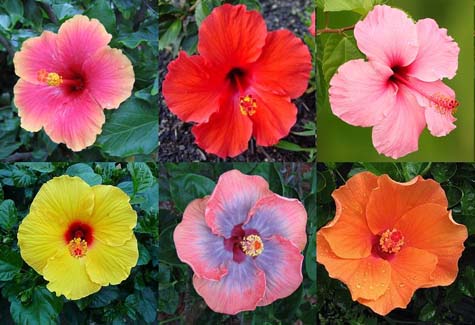Hibiscus 
By: Dylan Zubke
Abuntantly found in tropical climates; Hibiscus is also called rosemallow. It belongs to the Malvaceae Family and is scientifically known as Hibiscus rosa-sinensis,which is the red hibiscus.
The species includes many shrubs, small trees, and perennial herbaceous plants. There are apporxiametely 200 hundered species of the flower around the world.
Hibiscus Specifics
Hibiscus rosa-sinensis
Family - Malvaceae
Origin - many cultivars, species plant native to east Asia
Description - evergreen shrub to 8’
Flowering Season - continuous in absence of frost
Exposure - full sun best
Moisture - average to moist
USDA Hardiness Zones - 9-11
Types of Flowers
There are various types of Hibiscus based on their shape and pattern. Common types of the plant are:
- Electric Blue

- Hawaiian Sunset
- Lavender Lady
- Erin Rachael
- Gator Pride
- Flame Ball
The most famous of all is the Chinese Hibiscus; grown in Hawaii and used for ornamental purposes such as the leis used to greet tourists.
Uses of Hibiscus
 Hibiscus extract is commonly used in hair and scalp treatements to enhance hair growth. It has a soothing effect on the scalp and helps with toxin elimination as well as stimulates circulation. Commonly used to counter problems such as dandruff and hair loss.
Hibiscus extract is commonly used in hair and scalp treatements to enhance hair growth. It has a soothing effect on the scalp and helps with toxin elimination as well as stimulates circulation. Commonly used to counter problems such as dandruff and hair loss.
Hibiscus can also help with the cooling of rashes and the lowering of a fever. Various forms of the flower are used to help with sores from cancer, the juice from the leaves and flowers is said to regularize the menstrual cycle, and oil from the flower can be used as a shoe polish.
Hibiscus rosa sinesis is the state flower of Hawaii. It is the national flower of Malaysia and Hibiscus syriacus is the national flower of South Korea.